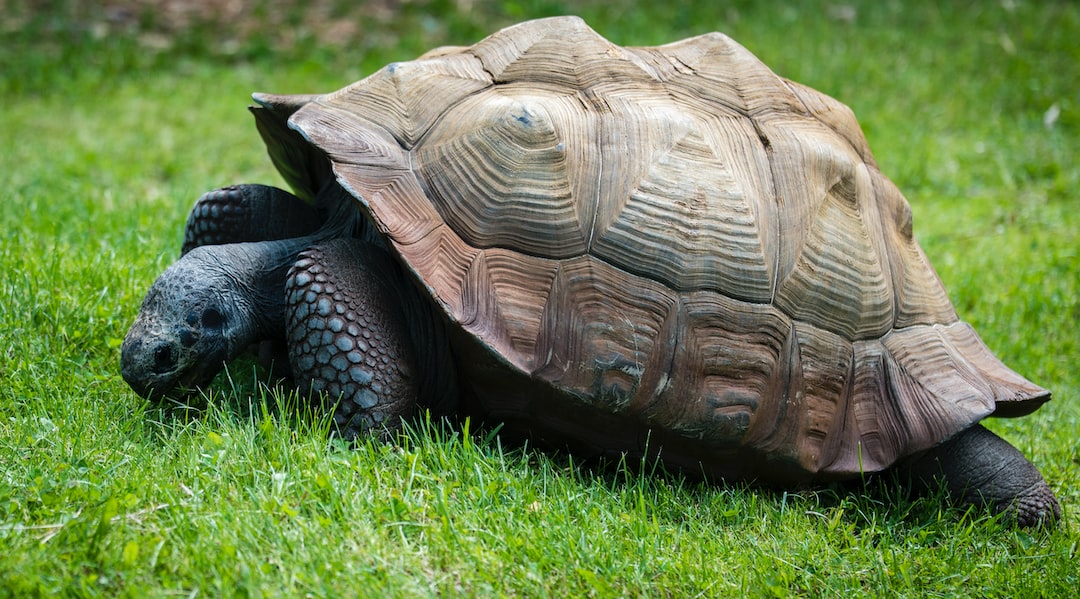Why Do Turtles Hide In Their Shell?
Turtles are fascinating creatures that have been around for millions of years. They are reptiles that are characterized by their hard, protective shell. Turtles can be found in various habitats, including oceans, rivers, and forests. They come in a wide range of sizes, from small turtles that can fit in the palm of your hand to large turtles that can weigh hundreds of pounds.
One of the most unique features of turtles is their shell, which serves as a defense mechanism against predators. The shell is made up of two parts: the carapace, which is the top part of the shell, and the plastron, which is the bottom part. The shell is made of bone and covered with a layer of keratin, the same material that makes up our hair and nails.
Table of Contents
Anatomy of a turtle shell and its protective features
The turtle shell is a remarkable structure that provides excellent protection for the turtle. It is composed of several different parts that work together to keep the turtle safe. The carapace is the top part of the shell and is made up of several fused bones called scutes. These scutes provide strength and rigidity to the shell.
The plastron is the bottom part of the shell and is also made up of fused bones. It has a hinge in the middle that allows the turtle to retract its head, tail, and limbs inside the shell for added protection. The plastron also has a central plate called the bridge, which connects the carapace and plastron.
The shell protects the turtle from predators by providing a hard barrier that is difficult to penetrate. It also acts as camouflage, blending in with the turtle’s surroundings and making it harder for predators to spot. Additionally, some turtles have sharp edges on their shells that can deter predators from attacking.
Evolutionary history of turtles and the development of their shell
Turtles have a long evolutionary history that dates back over 200 million years. They are believed to have evolved from reptiles that lived on land and gradually adapted to life in the water. The development of the turtle shell is one of the most significant evolutionary adaptations in their history.
The exact origin of the turtle shell is still a topic of debate among scientists. One theory suggests that the shell evolved from modified ribs that gradually fused together over time. Another theory proposes that the shell developed from bony plates that formed on the skin and eventually fused together.
Regardless of its origin, the turtle shell has proven to be a successful adaptation. It provides protection against predators and allows turtles to thrive in a variety of environments. The evolution of the shell has also led to changes in other aspects of turtle anatomy, such as the shape and size of their limbs.
How turtles use their shell for more than just protection
While the primary function of the turtle shell is protection, it serves other important purposes as well. One of these is thermoregulation, or the regulation of body temperature. Turtles are ectothermic, which means they rely on external sources of heat to regulate their body temperature. The shell helps them absorb and retain heat from the environment, allowing them to stay warm.
The shell also plays a role in buoyancy, or the ability to float in water. Turtles have air-filled spaces within their shells that help them stay afloat. By adjusting the amount of air in these spaces, turtles can control their buoyancy and move through the water more efficiently.
In addition to these functions, the shell is an integral part of a turtle’s anatomy and survival. It provides attachment points for muscles and organs, helps maintain the shape and structure of the body, and allows for efficient movement both on land and in water.
Environmental factors that influence a turtle’s decision to hide in its shell
Turtles have a natural instinct to hide in their shells when they feel threatened or in response to environmental factors. One of the main factors that influence this behavior is temperature. Turtles are ectothermic, so they rely on external sources of heat to regulate their body temperature. When the temperature drops too low, turtles may retreat into their shells to conserve heat and protect themselves from the cold.
Humidity is another environmental factor that can influence a turtle’s decision to hide in its shell. Turtles need a certain level of humidity to keep their skin and shell healthy. If the environment becomes too dry, turtles may seek shelter in their shells to prevent dehydration.
Turtles also use their shells to regulate their internal environment. When they are exposed to extreme temperatures or other stressful conditions, they can retract their head, tail, and limbs into their shell to create a protective barrier. This behavior helps them conserve energy and reduce the risk of injury.
The psychological benefits of hiding in a shell for turtles
Hiding in a shell provides more than just physical protection for turtles. It also has psychological benefits that help reduce stress and anxiety. When turtles retreat into their shells, they create a safe space where they can feel secure and protected from potential threats.
The shell acts as a shield against predators and other dangers, giving turtles a sense of security. This feeling of safety allows them to relax and reduces their stress levels. Hiding in a shell also helps turtles conserve energy by minimizing unnecessary movement and activity.
In addition to reducing stress, hiding in a shell can also help turtles conserve water. By retracting their head, tail, and limbs into their shell, turtles minimize the surface area exposed to the environment, which reduces water loss through evaporation.
Common misconceptions about turtles and their shell
There are several common misconceptions about turtles and their shells that are important to address. One of these is the belief that turtles can leave their shell. In reality, a turtle’s shell is fused to its spine and ribcage, making it a permanent part of its anatomy. Turtles cannot leave their shells, and attempting to remove a turtle from its shell would cause serious harm or even death.
Another misconception is that turtles can outgrow their shells and need to find larger ones as they grow. In reality, a turtle’s shell grows with it as it ages. The scutes on the shell may shed and be replaced with larger ones, but the overall size and shape of the shell remain relatively constant throughout the turtle’s life.
The importance of respecting a turtle’s natural instinct to hide in its shell
It is crucial to respect a turtle’s natural instinct to hide in its shell. Disturbing a turtle in its shell can be extremely stressful and harmful to its health and well-being. When a turtle feels threatened or scared, it retreats into its shell as a defense mechanism. Forcing a turtle out of its shell can cause it to become disoriented, anxious, and even physically injured.
Respecting a turtle’s natural instinct to hide in its shell also means giving them space and not approaching them too closely or handling them unnecessarily. Turtles are wild animals that should be observed from a distance and left alone in their natural habitat.
Threats to turtle populations and the role of shell protection in conservation efforts
Turtles face numerous threats to their survival, including habitat loss, pollution, climate change, and poaching. The destruction of their natural habitats deprives turtles of essential resources and disrupts their breeding and nesting patterns. Pollution, such as plastic waste in the oceans, poses a significant threat to turtles, as they can mistake it for food and ingest it.
Poaching is another major threat to turtle populations, particularly in regions where turtles are hunted for their meat, eggs, or shells. The demand for turtle products, such as tortoiseshell jewelry, drives illegal trade and puts additional pressure on already vulnerable populations.
Protecting turtles and their shells is an essential part of conservation efforts. By preserving their habitats, reducing pollution, and enforcing laws against poaching, we can help ensure the survival of these incredible creatures. Educating the public about the importance of turtles and their shells is also crucial in fostering a sense of appreciation and respect for these animals.
Appreciating the wonder and complexity of the turtle shell
The turtle shell is a remarkable adaptation that has allowed turtles to thrive for millions of years. It serves as a protective barrier against predators, helps regulate body temperature, and provides buoyancy in water. The shell is an integral part of a turtle’s anatomy and plays a vital role in its survival.
It is important to appreciate and protect turtles and their shells. By understanding their unique characteristics and behaviors, we can better appreciate the wonder and complexity of these incredible creatures. Respecting a turtle’s natural instinct to hide in its shell and taking steps to conserve their habitats are essential in ensuring their continued existence.
In conclusion, turtles and their shells are fascinating subjects that deserve our admiration and protection. By learning more about these incredible creatures and spreading awareness about their importance, we can contribute to their conservation and help ensure that future generations can continue to marvel at the wonder of the turtle shell.
If you’re curious about the fascinating behaviors of reptiles, you might also be interested in learning about why turtles dig holes. Turtles are known for their ability to retreat into their shells for protection, but did you know that they also have a penchant for digging? This article on Reptile Friend explores the reasons behind this behavior and delves into the various factors that drive turtles to dig holes. From nesting and hibernation to thermoregulation and camouflage, understanding why turtles dig holes can provide valuable insights into their natural instincts and survival strategies. So, if you want to uncover the secrets of turtle behavior, check out this informative article: Why Do Turtles Dig Holes?







